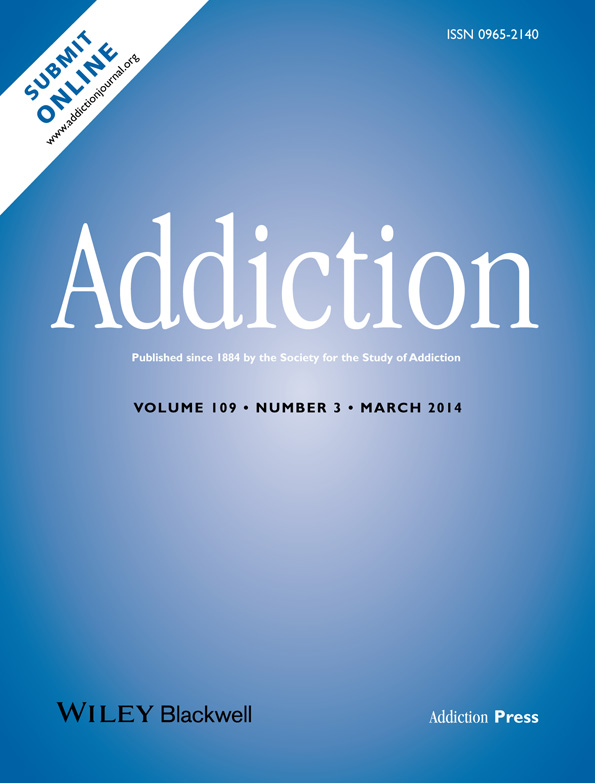Nicotine content of electronic cigarettes, its release in vapour and its consistency across batches: regulatory implications
Abstract
Background and aims
Electronic cigarettes (EC) may have a potential for public health benefit as a safer alternative to smoking, but questions have been raised about whether EC should be licensed as a medicine, with accurate labelling of nicotine content. This study determined the nicotine content of the cartridges of the most popular EC brands in the United Kingdom and the nicotine levels they deliver in the vapour, and estimated the safety and consistency of nicotine delivery across batches of the same product as a proxy for quality control for individual brands and within the industry.
Methods
We studied five UK brands (six products) with high internet popularity.
Measurements
Two samples of each brand were purchased 4 weeks apart, and analysed for nicotine content in the cartridges and nicotine delivery in vapour.
Results
The nicotine content of cartridges within the same batch varied by up to 12% relative standard deviation (RSD) and the mean difference between different batches of the same brand ranged from 1% [95% confidence interval (CI) = −5 to 7%] to 20% (95% CI = 14–25%) for five brands and 31% (95% CI = 21–39%) for the sixth. The puffing schedule used in this study vaporized 10–81% of the nicotine present in the cartridges. The nicotine delivery from 300 puffs ranged from ∼2 mg to ∼15 mg and was not related significantly to the variation of nicotine content in e-liquid (r = 0.06, P = 0.92). None of the tested products allowed access to e-liquid or produced vapour nicotine concentrations as high as conventional cigarettes.
Conclusions
There is very little risk of nicotine toxicity from major electronic cigarette (EC) brands in the United Kingdom. Variation in nicotine concentration in the vapour from a given brand is low. Nicotine concentration in e-liquid is not well related to nicotine in vapour. Other EC brands may be of lower quality and consumer protection regulation needs to be implemented, but in terms of accuracy of labelling of nicotine content and risks of nicotine overdose, regulation over and above such safeguards seems unnecessary.




